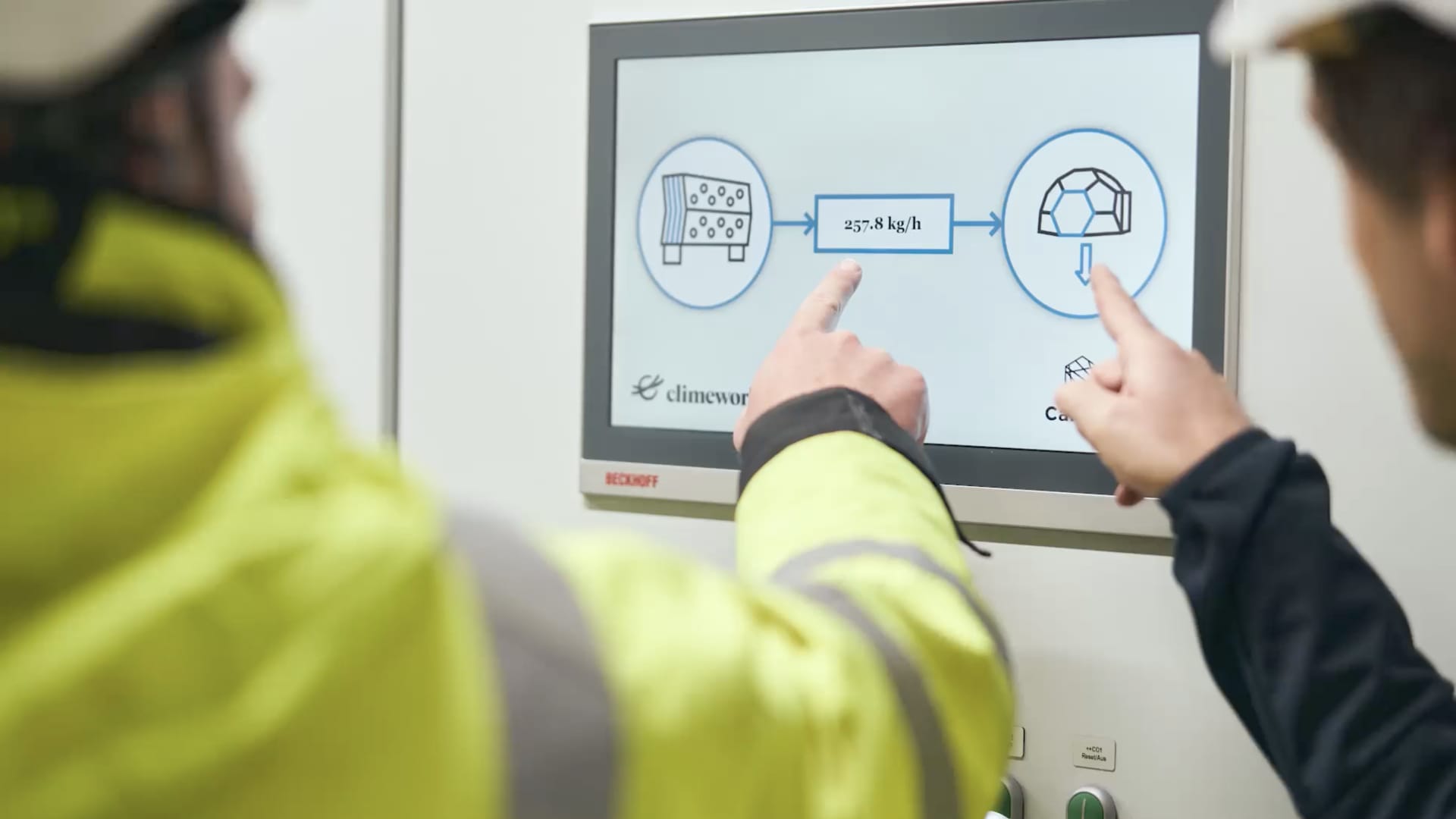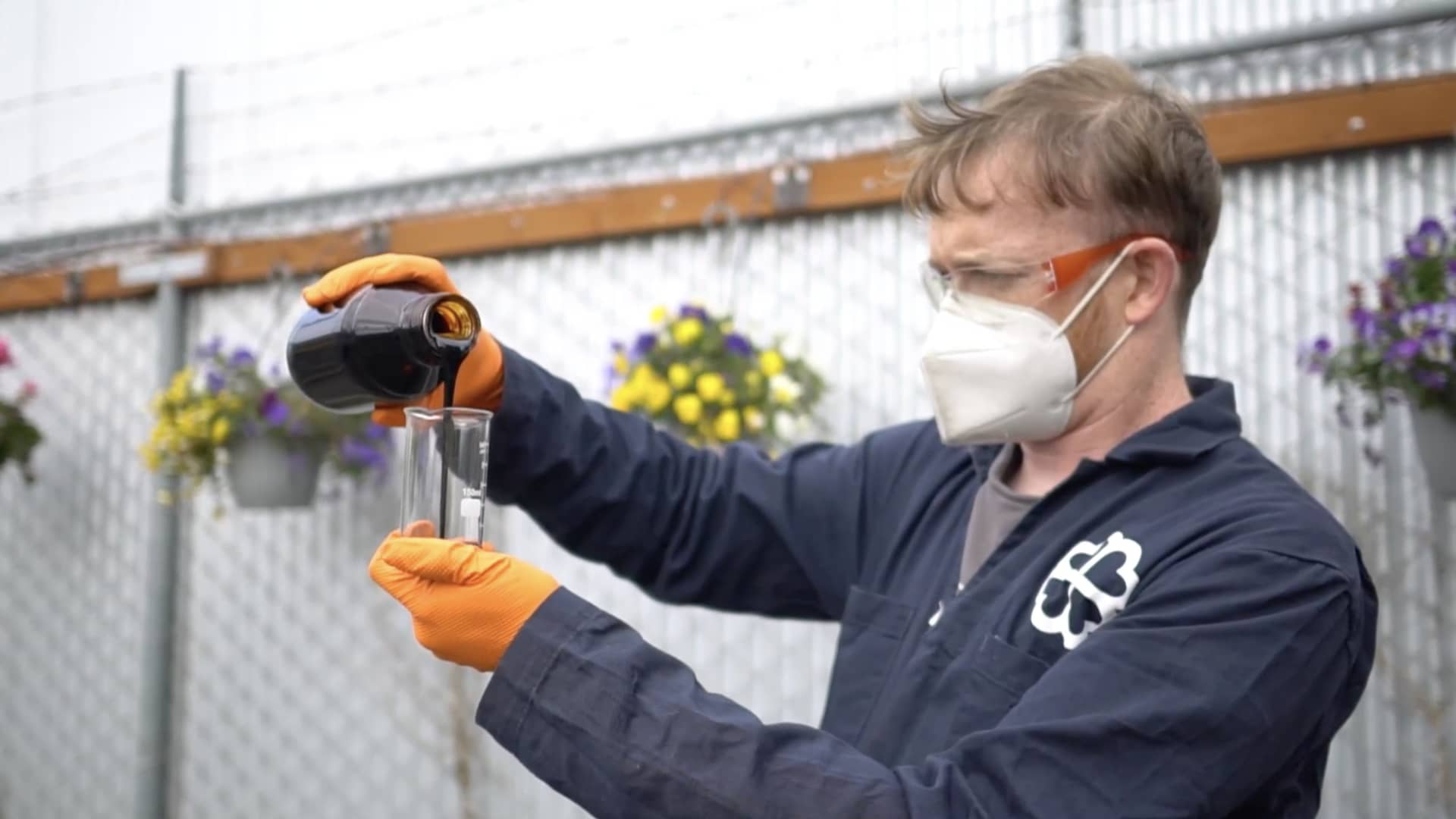
Why Big Tech Is Pouring Money Into Carbon Removal
The market for carbon removal is expanding rapidly, and private money is pouring in from tech companies seeking to help early-stage carbon capture and storage startups scale up and bring costs down.
The wave of funding comes as reports from the Intergovernmental Panel on Climate Change double down on the need to remove billions of tons of carbon dioxide from the air, emphasizing that emissions-reductions efforts alone are not be enough.
"We have to do emissions reduction at a massive scale, at a massive pace period. Full stop. Unfortunately, because we've done such a poor job with that to date, we are now also going to have to do carbon removal," said Nan Ransohoff, head of Climate at Stripe, an online payments company that's invested millions in carbon removal technologies.
Carbon removal amounts to a process of storing carbon dioxide that's already been emitted. That's different than capturing emissions from a smokestack or recycling carbon to make temporary products like carbonated beverages, plastics or fuels. Planting trees is one way to go about it, but experts say that's not enough to address climate change.
Get top local stories in Philly delivered to you every morning. Sign up for NBC Philadelphia's News Headlines newsletter.
In April, Stripe teamed up with Alphabet, Meta, Shopify and McKinsey to launch an initiative called Frontier, which plans to purchase $925 million worth of carbon removal by 2030 from nascent carbon removal companies, in an effort to accelerate research and development efforts and lower costs.
The technical approaches to permanent carbon removal vary widely, from pulling CO2 out of the air with giant fans and injecting it into rocks, to altering the pH of the ocean so that it can absorb more carbon from the atmosphere. But no matter the methodology, some subset of these technologies will likely need to scale up quickly to keep global warming below 1.5 or even 2 degrees Celsius in the years ahead.
"The scales these are going to have to be built out at almost defy comprehension," said Eric Toone, technology lead at Breakthrough Energy Ventures, which has made numerous investments in the carbon removal space. "To capture something like 30% of emissions in 2050, you're talking about building an industry that's three times five times larger than the global petrochemical industry today."
Different storage methods

Direct air capture companies like Climeworks and Carbon Engineering are some of the best known players in this space. They use giant fans, along with complex chemical processes or filters, to take CO2 out of the air. But until recently, there's been no incentive to simply bury that carbon, so they've had to sell it into various markets.
Money Report
Carbon Engineering, for example, has sold its captured CO2 to oil and gas companies that use it for "enhanced oil recovery," in which carbon dioxide is injected underground in order to extract more oil from petroleum wells. The carbon is sequestered, but since the process produces more oil to be burned, it almost never leads to negative emissions, and is therefore not considered "carbon removal."
Climeworks
Swiss company Climeworks initially went to market by selling captured CO2 to greenhouses in Switzerland, where it's used to grow vegetables, and to beverage companies, which use it to make carbonated drinks. But in 2017, Climeworks began working with Carbfix, an Icelandic company that sequesters CO2 permanently by dissolving captured carbon in water and injecting it into basalt rock formations.
"The CO2 is injected into these rocks and is then mineralized. That literally means the CO2, within two years after injection, is turned into stone. So it is solidified a kilometer underground and thereby it is absolutely, permanently stored for the next hundreds of millions of years," said Jan Wurzbacher, Climework's co-founder and Co-CEO.
Partly funded by Stripe, Climeworks launched a new direct air capture and storage plant in Iceland last year and recently raised $650 million — the biggest funding round in the history of the carbon removal industry.
Charm Industrial
Charm Industrial believes that it's found a cheaper means of carbon removal by sourcing crop residue like stalks, stems and leaves from farms. This biomass has already captured carbon from the atmosphere. Then, Charm converts it to bio-oil, which is stored underground.
"The conversion process from biomass to bio-oil is called pyrolysis or fast pyrolysis. And it's where we first grind down the biomass into really, really tiny pieces so that we can push heat through it really quickly, " explained Charm CEO Peter Reinhardt. "And then we heat it up from room temperature to 500 degrees centigrade in less than a few seconds. And that really fast heating rate vaporizes the cellulose and the biomass. And then we condense it back into a liquid."
As a last step, the bio-oil is injected deep underground, where it solidifies. Stripe was Charm's first customer, and now others like Microsoft and Shopify have also bought in.

CarbonCure
Canadian company CarbonCure has a different approach. Unlike Climeworks and Charm, CarbonCure is putting carbon dioxide to use by injecting it into concrete mixes, which permanently stores the CO2, and has the added benefit of making the concrete stronger.
"The CO2 is injected into concrete and it's reacting with the cement as it's being batched. And a chemical reaction occurs where the calcium reacts with the CO2 to form a mineral," Robert Niven, CarbonCure founder and CEO explained. "Why that reaction matters is it's actually increasing the strength of concrete."
That increased strength means concrete producers can use less cement in their mixes, which helps make the industrial process greener. Stripe also was its first customer, and now others like Shopify, Mapbox and Zendesk are on board.
Right now, CarbonCure's concrete producer partners source CO2 from large industrial facilities like ethanol plants or refineries, where it's captured from smokestacks. That means that CarbonCure isn't removing CO2, but rather it's preventing new emissions from nearly 600 plants worldwide.
But the company is starting to get involved with carbon removal through a Department of Energy-funded partnership with California-based direct air capture company CarbonCapture.
Planetary Technologies
Another emerging method of permanent carbon removal relies on ocean-based capture and storage.
Canadian-based Planetary Technologies bases its technology on the fact that the relative concentration of CO2 in the atmosphere and the ocean is always in balance, and thus has risen over time, making the ocean more acidic. But if we can decrease the acidity of the ocean by lowering CO2 content, the ocean would have more capacity to absorb additional CO2 from the air. That's what Planetary is working toward by adding an antacid to seawater.
"So by just simply adding our antacid into seawater, we're neutralizing this acidic CO2, we're turning it into bicarbonate or baking soda, and then that stays in seawater for 100,000 years," said Mike Kelland, CEO of Planetary Technologies. "And what that means is that because the concentration in the ocean of CO2 is lower now, more CO2 will invade from the atmosphere to balance out that concentration."
Planetary plans to start open-ocean trials this year, by adding its antacid to wastewater treatment facilities, which already have permits that allow them to clean up water before it goes into the ocean. Shopify is Planetary's first customer.
The business model gap: Carbon markets needed
It's an exciting time to be working in this space, but early-stage purchases by tech companies and others will only go so far.
"There's no doubt that if we're going to do this to try and address climate change, eventually we're going to have to just capture this CO2 and pump it into the ground and store it for eternity. And to do that, we need carbon markets," said Toone of Breakthrough Energy.
About 40 countries and over 20 cities, states, and provinces already do have some form of carbon pricing, though in many cases those prices would be too low to incentivize carbon removal even if these companies were operating at scale.
Many industry leaders hope the U.S. will implement a federal carbon pricing scheme as well, and increase the current tax credit for carbon storage, which is about $35 per ton of geologically sequestered CO2, and about $22 for CO2 that's used in a product like concrete.
Carbon removal does generally enjoy bipartisan support in Washington, and the Department of Energy recently launched a $3.5 billion program to develop four direct air capture hubs across the U.S., with each one intended to permanently remove over 1 million tons of carbon dioxide per year.
"I think that government management of a market that prices carbon in a way that results in its removal happens when people decide that it's cheaper to deal with the CO2 than it is to deal with the consequences of the CO2," said Toone. "And there is absolutely a growing awareness of exactly what the costs of that carbon are."
Watch the video to learn more about different approaches to carbon removal.
Additional reporting by Cat Clifford






